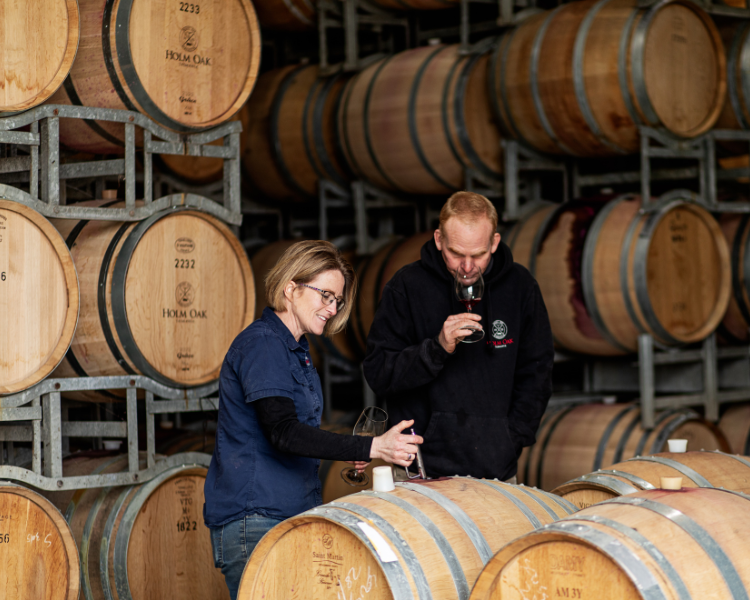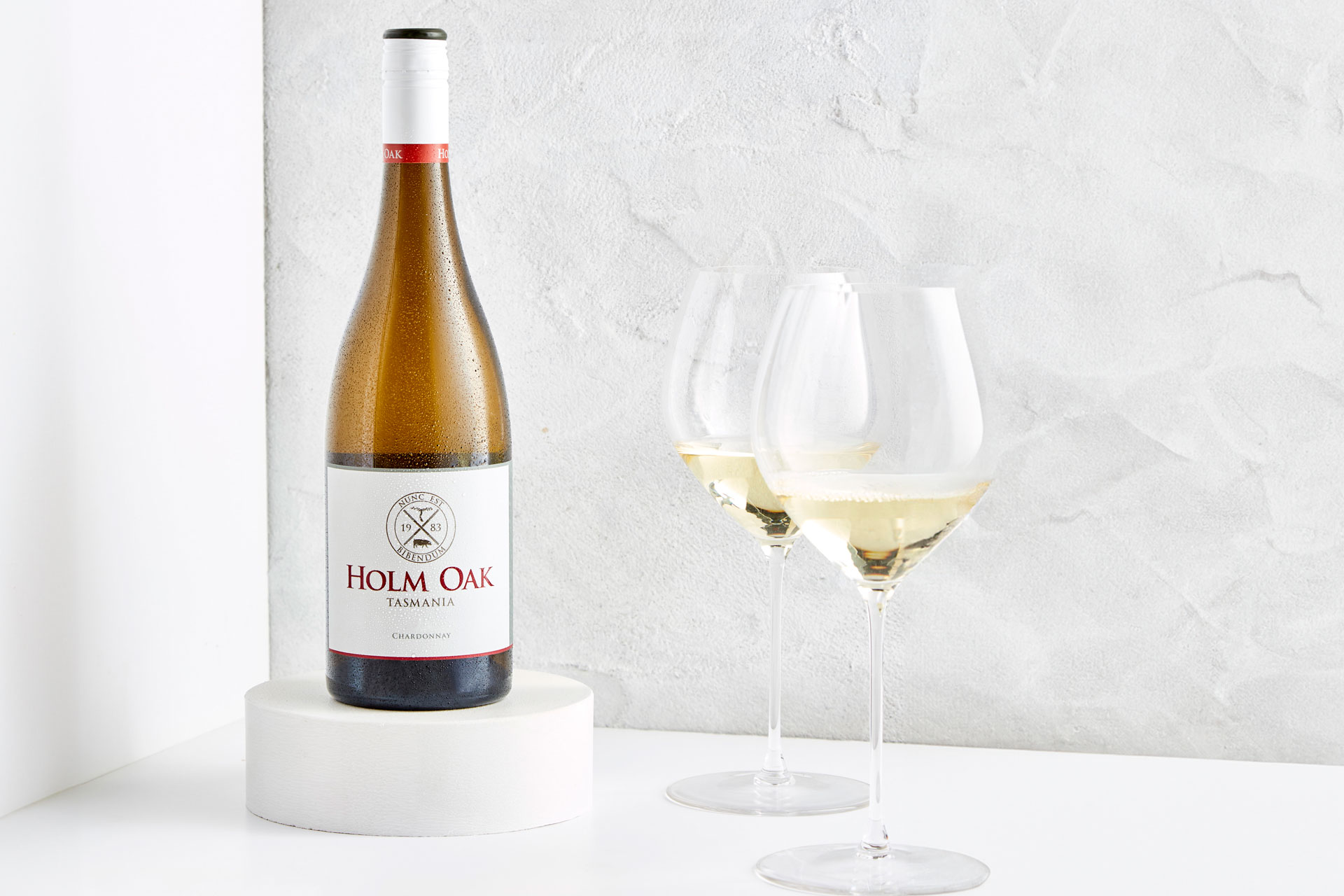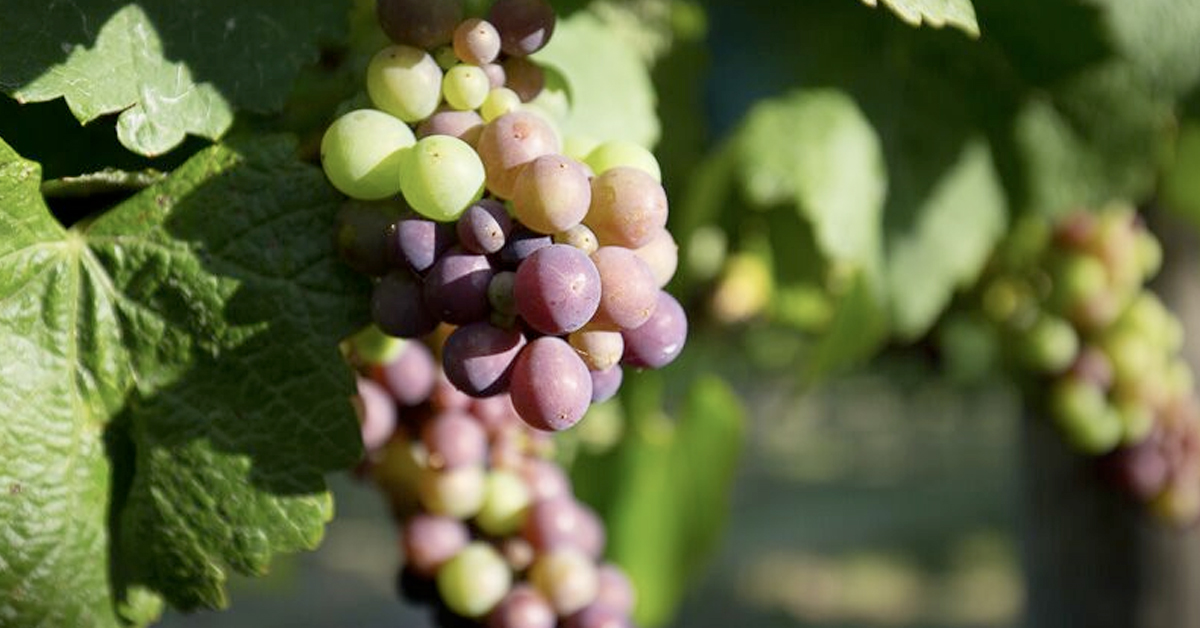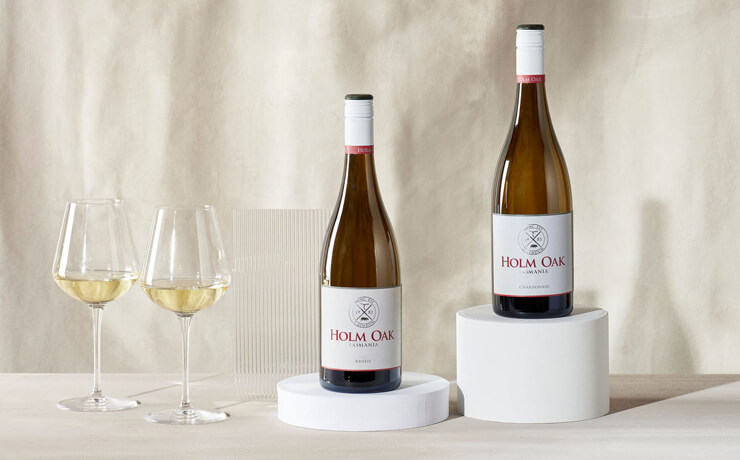How to Age and Cellar Pinot Noir

It’s no secret that we love pinot noir here in Tasmania! However, although many pinot noir wines are made for immediate consumption, others will benefit from a little time in the cellar. But just how long should you put your favourite pinot noir down before you enjoy them? With pinot noir, a number of factors influence the ageing process, from viticulture, winemaking techniques and Mother Nature to time in bottle and choice of closure. Proper cellaring plays an important role, too.
Read on for a Holm Oak pinot noir tutorial, including tips and tricks to get the most value and enjoyment out of your wine.
Does Pinot Noir Age?
The most famous pinot noir in the world arguably comes from the Burgundy wine region in France. As many wine collectors would espouse, Burgundy has a reputation for pinot noir wines that age well. Often young Burgundy can appear very firm and closed in the first few years of release. New World pinot noir, on the other hand, such as those from Australia and New Zealand, is often thought of more for immediate consumption. Some don’t have the firmer structure of their Burgundian counterparts.
That’s changing, though, as pinot from all over the world proves its own pedigree depending on the region and age of the vines. Yes, Tasmania’s finest can stand up alongside some of the finest in the world. Ultimately, pinot noir’s ability to age depends largely on where and how it’s grown as well as the impact of the winemaker throughout the winemaking process. With the right tender loving care, Tasmania’s cool-climate pinot noirs really can age beautifully, as we’ve seen with our Wizard Pinot Noir.
Indeed, here in Australia, our reputation for fine pinot noir is on the rise. Beyond Tasmania, Victoria’s Yarra Valley and Mornington Peninsula as well as South Australia’s Adelaide Hills are also regions making names for themselves for making world class finest pinot – and pinots that can age.
Here are some of the factors that impact ageability.
Viticulture and Winemaking
There’s no denying that pinot noir is one of the more difficult wines to make. Vintage conditions are a key consideration about what pinot to put down and save for later. Thanks to our unique island setting, Tasmania enjoys a moderate maritime climate. Winds from the Southern Ocean keep us cool, but it’s rare for us to experience extreme temperatures. With our temperate springs and summers, warm autumn days and cooler autumn nights, pinot noir grapes are slow to ripen. As a result, they can develop complex, concentrated and intense fruit flavours with good structure and balance. These elements are important during the ageing process, so viticulture that results in high-quality, perfectly ripe fruit is key.
So, what are the viticultural decisions we make here at Holm Oak? First, we discuss what blocks or clones have performed well in previous vintages and what product we think each block is best suited for before we start pruning. Because tannin structure and fruit intensity are important for pinot to be able to age well, we look to have low to moderate yields, plant clones that are known for their higher tannin content and use viticultural practices that influence both of these attributes.
When we’re pruning, for example, we use lower bud numbers on vines on which we want less yield. We use leaf plucking in the fruit zone to allow better light penetration, which helps with tannin maturation. We irrigate to ensure good vine functionality yet keep berry size small. This allows for a greater skin-to-juice ratio, resulting in more colour and tannin in the wine. We also use moderate levels of nutrition to ensure that the vine still functions without being too vigorous.
In the vineyard, lower yields generally lead to small berries with higher levels of tannin; this can also assist the ageing process. And again, here in Tasmania, the higher acidity in our pinot noir – thanks to our cool-climate advantage – helps keep wines fresh throughout this process. Some would say that we’ve got many similarities to Burgundy.
In the winemaker’s toolbox, there are various techniques they can use to influence the structure of the wine and therefore its ability to age. These can include:
- cold soaking
- extended maceration
- using stalks and whole bunches
- the temperature of the ferment (hotter temperatures extract more tannin, and cooler temps will produce more fruit-driven styles)
- the choice of oak
- time in oak.
Bottle Ageing
Good-quality pinot noir will develop over time in bottle to become richer and more intense. This is when secondary aroma characters will start to emerge, such as earthy, mushroom and forest floor notes. However, the wine will still maintain its freshness and vibrancy. The palate will be silky but will still have fine tannins and fresh acidity.
Cork Versus Screw Cap in Ageing Pinot Noir
In general, we Aussies love the screw cap and appreciate its advantages over cork. For one thing, no cork means no cork taint, a fault that impacts the smell and taste of the wine. But other wine regions in the world continue to prefer a cork closure, and the ability to age pinot under this closure often depends on the quality of the cork and the track record of the producer.
Don’t worry, though, about putting down your wines under a screw cap (or Stelvin) closure. As far as ageing under screw cap, this type of closure still allows pinot noirs to develop those important secondary characteristics.
How Long Can You Cellar Pinot Noir?
We’ve been making pinot noir here in Tasmania since 2007. It’s allowed us to specialise in this varietal and make four styles. Our Wizard and Hot Shot pinot noirs are the wines we recommend for longer term ageing. For these two wines, we use whole bunches; some oak to add more structure; and lower yielding, slightly riper fruit. Our Holm Oak Estate Pinot Noir also ages well – for approximately six to eight years – whereas you’ll want to drink the Protégé Pinot Noir within two years of release. Having said that, both of these wines will develop interesting secondary characters, thanks to high-quality fruit, good acidity and bottling under screw cap.
At Holm Oak, we keep a lot of back-vintage wine, particularly pinot, to see how it’s ageing. These back vintages are available to our wine club members, too. We also make sure to keep at least a dozen bottles of every vintage for ourselves.
In a perfect world, you want to store your pinot in a humidity- and temperature-controlled environment, away from unnecessary vibration and light. If the pinot gets too warm, you risk ageing it prematurely and impacting its flavours. Likewise, storing it at temperatures that are too cold can hurt the integrity of the wine. It’s most important to keep it at a stable temperature; you don’t want the wines going from hot to cold and back again. Ideally, store these reds at temperatures from 12 to 14°C until you’re ready to enjoy them.
Thirsty now after all this research? Time to explore our range of Holm Oak Pinot Noir and find a favourite. Cheers!



